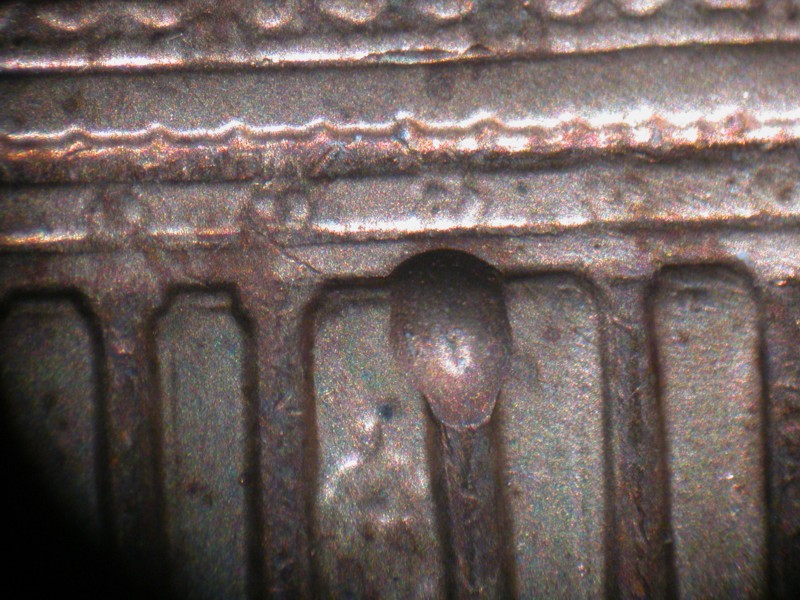Part V: Planchet Errors:
Pre-strike Damage:
Rockwell test mark in planchet
Definition: A Rockwell hardness tester is used to measure the hardness of metals in the U.S. Mint. It measures the depth of penetration of a steel or diamond-tipped pin relative to the applied force.
When applied to a planchet, the Rockwell test mark will appear as a small circular pit with a smooth floor. Such planchets are supposed to be discarded. If a planchet with a Rockwell test mark is struck by coinage dies, the pit is not erased. The pit’s original circular outline may, however, be distorted into a slight oval as the coin expands beneath the impact of the dies.
Depicted below is a 1971-S cent with a Rockwell test mark on the reverse face, above and to the right of Lincoln’s statue. This coin falls in with expectations derived from sparse written sources.
This particular example was authenticated by “Lonesome” John Devine and is convincing. The floor of the cup-shaped depression is completely smooth, as would be expected of a dimple produced by a pin tipped by a small steel ball. Although there is no metal flow in the design bordering the crater, there is also no trace of a pressure ridge, indicating that the defect was present before the strike. The pit is oval, rather than circular, but this can be attributed to distortion produced by the strike.
All alleged Rockwell test marks in planchets are now considered suspect, including the 1971-S cent described above.
This pit has a smooth floor and oval shape. It was long assumed that the originally circular outline was altered by the strike, but I now see this as unlikely. First of all, the pit is near the center of the coin, where converging lines of radial tensile stress meet and where radial expansion would have been limited. Second, the pit’s long axis is oriented north-south, instead of oriented toward 12:15. Third, the pit’s long axis overlies and is aligned with a Memorial column. Coin metal rising into a column recess would also have flowed toward the pit, shrinking the circle’s north-south diameter.
This pit, and others like it, may represent the impressions of spherical pellets that fell onto the coin metal strip and were stretched out during rolling. They also might be the impressions of oblong objects that were struck into the coins and then fell out.
